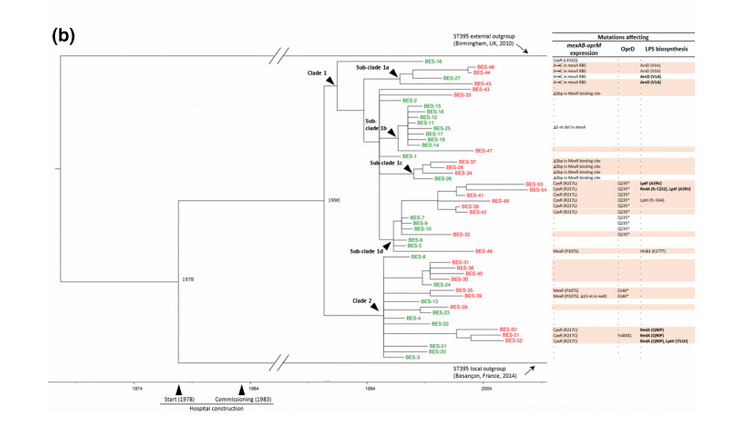The rise and the fall of a Pseudomonas aeruginosa endemic lineage in a hospital
Abstract
The biological features that allow a pathogen to survive in the hospital environment are mostly unknown. The extinction of bacterial epidemics in hospitals is mostly attributed to changes in medical practice, including infection control, but the role of bacterial adaptation has never been documented. We analysed a collection of Pseudomonas aeruginosa isolates belonging to the Besançon Epidemic Strain (BES), responsible for a 12year nosocomial outbreak, using a genotype-to-phenotype approach. Bayesian analysis estimated the emergence of the clone in the hospital 5years before its opening, during the creation of its water distribution network made of copper. BES survived better than the reference strains PAO1 and PA14 in a copper solution due to a genomic island containing 13 metal-resistance genes and was specifically able to proliferate in the ubiquitous amoeba Vermamoeba vermiformis. Mutations affecting amino-acid metabolism, antibiotic resistance, lipopolysaccharide biosynthesis, and regulation were enriched during the spread of BES. Seven distinct regulatory mutations attenuated the overexpression of the genes encoding the efflux pump MexAB-OprM over time. The fitness of BES decreased over time in correlation with its genome size. Overall, the resistance to inhibitors and predators presumably aided the proliferation and propagation of BES in the plumbing system of the hospital. The pathogen further spread among patients via multiple routes of contamination. The decreased prevalence of patients infected by BES mirrored the parallel and convergent genomic evolution and reduction that affected bacterial fitness. Along with infection control measures, this may have participated in the extinction of BES in the hospital setting.
